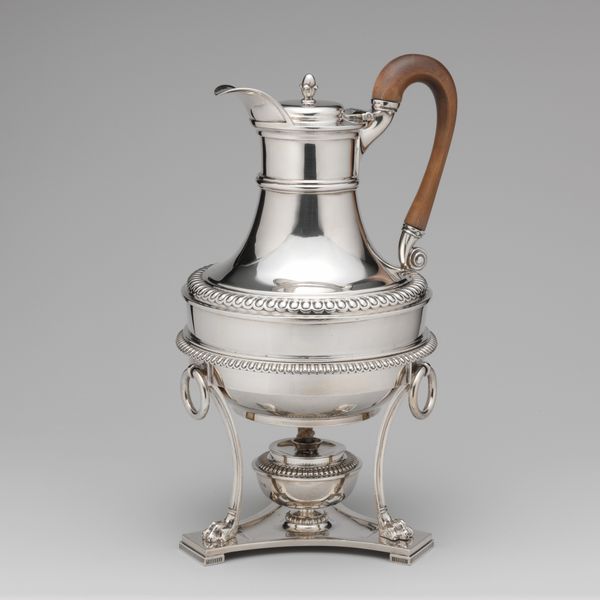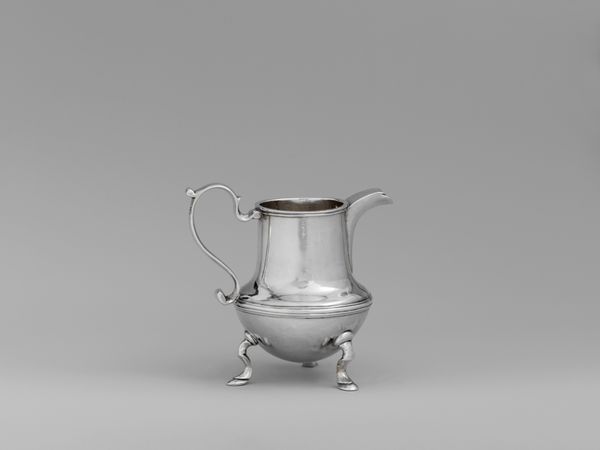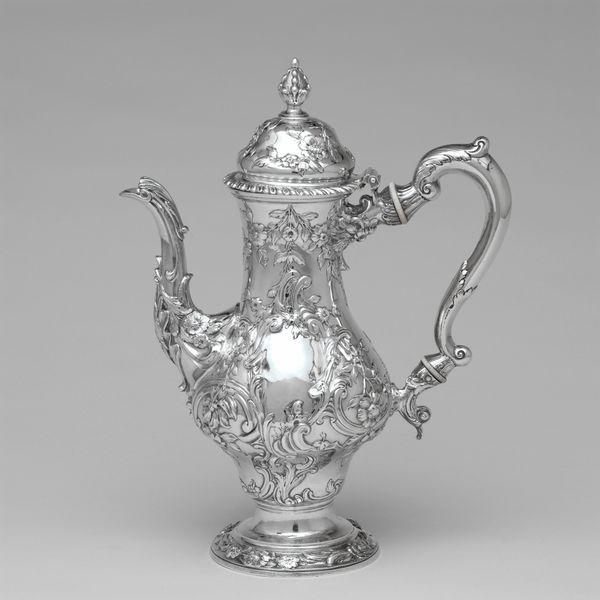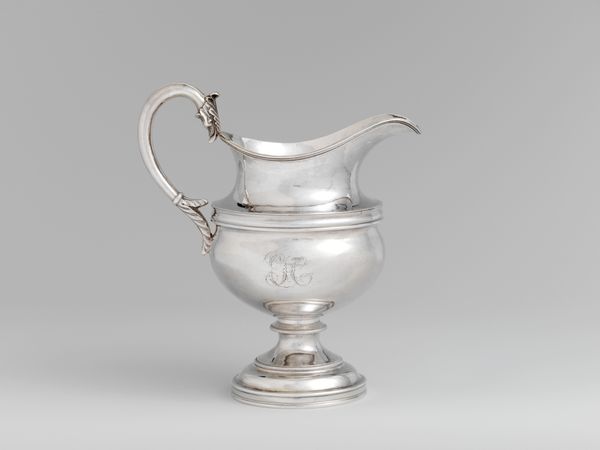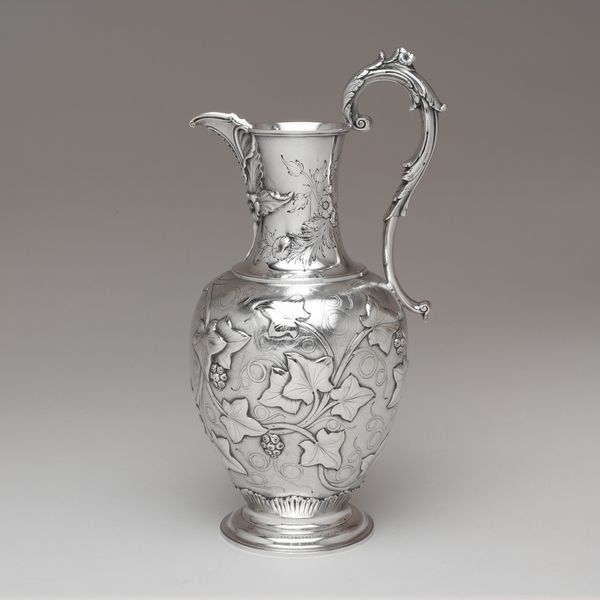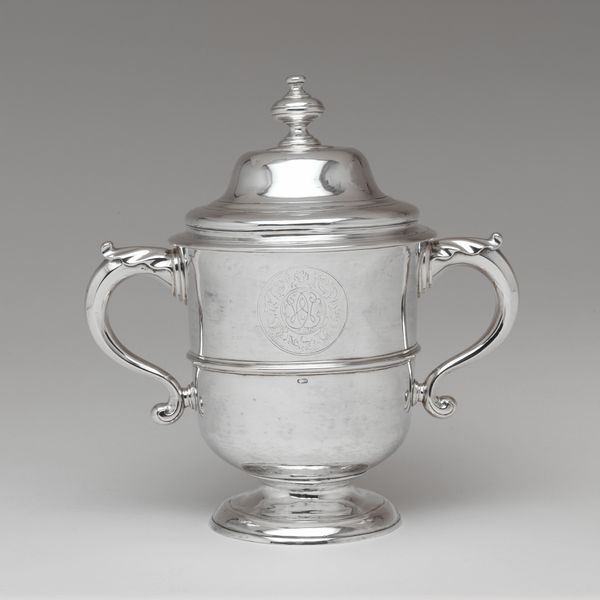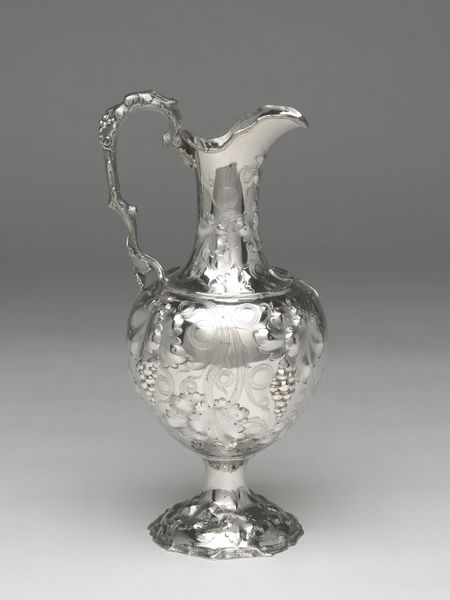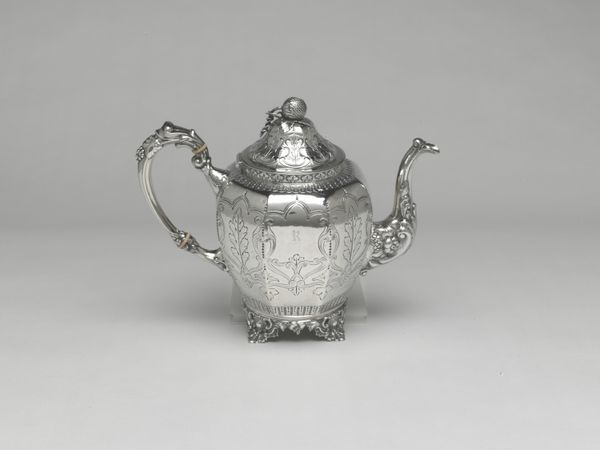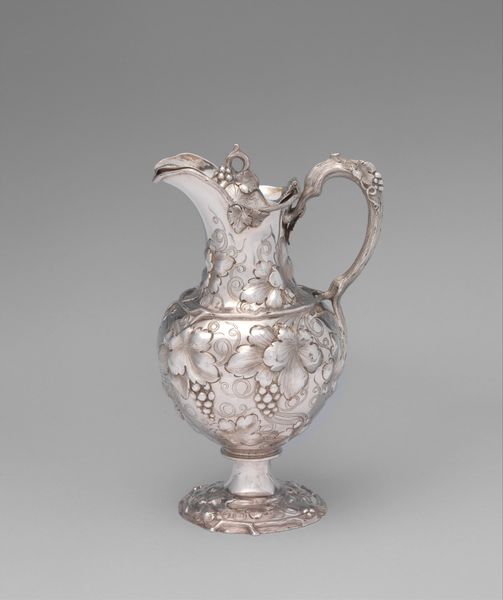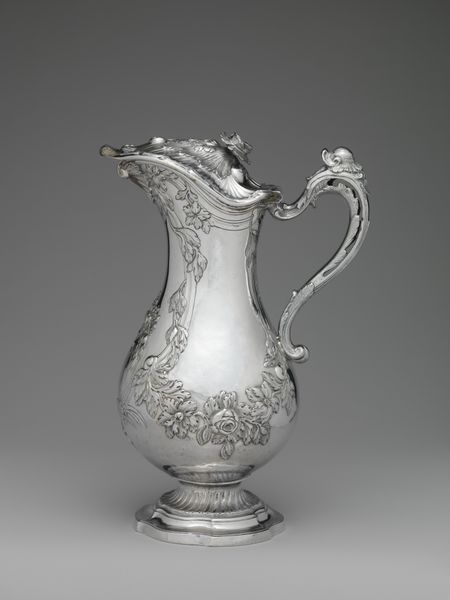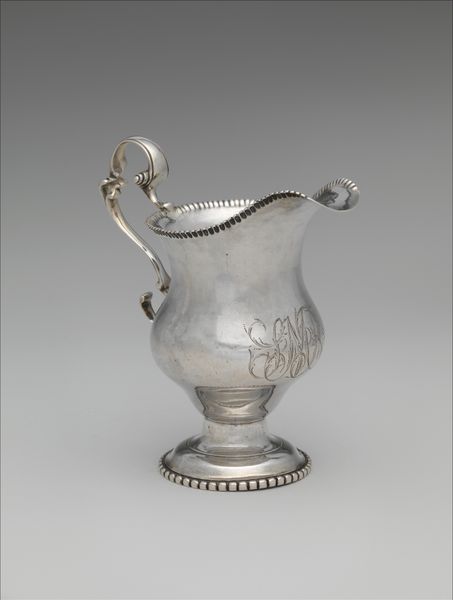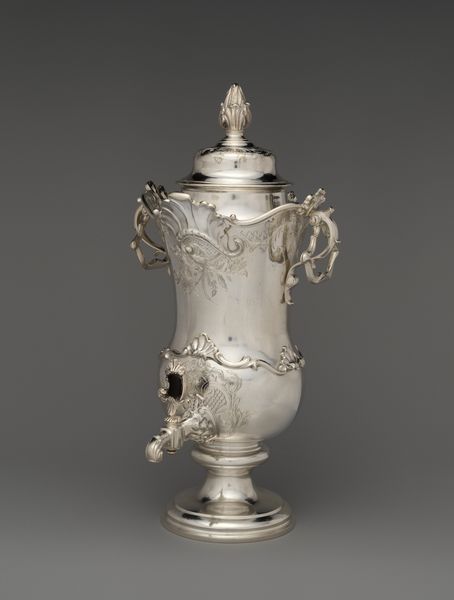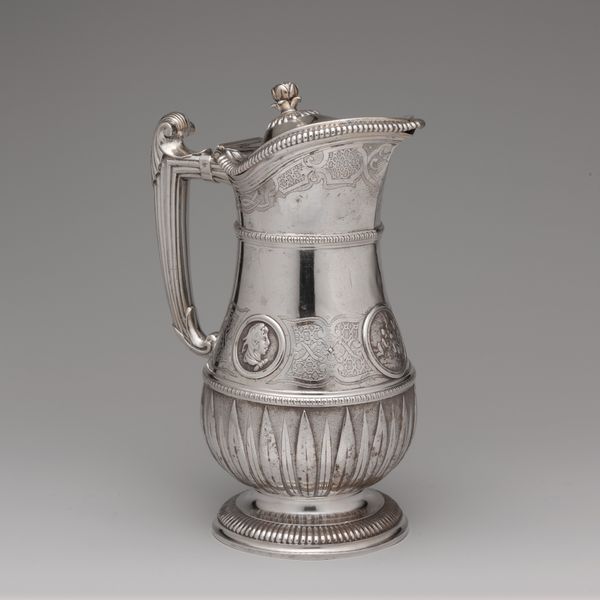
silver, metal, metalwork-silver, sculpture
#
silver
#
metal
#
metalwork-silver
#
sculpture
#
decorative-art
Dimensions: Height: 10 13/16 in. (27.5 cm)
Copyright: Public Domain
Editor: We’re looking at an Ewer, a type of pitcher, crafted from silver between 1885 and 1895 by Giacinto Melillo. It’s currently held at the Metropolitan Museum of Art. Its surface is immaculately polished, giving it an almost blinding sheen. What strikes you most about this piece? Curator: I am immediately drawn to how this object speaks to the rise of industrial capitalism and the construction of cultural identities in the late 19th century. Melillo’s choice of silver, coupled with the classical motifs – observe the figure integrated into the handle – invokes a sense of historical pedigree, yet it’s ultimately a mass-produced object aspiring to embody exclusivity. Does that tension resonate with you? Editor: Definitely. It's trying to be fancy, but the sheer volume of metal feels a little heavy-handed. I guess I just don't understand the intended audience. Curator: Consider the burgeoning middle class of the period. They sought markers of status, of ‘good taste,’ that traditionally belonged to the aristocracy. This Ewer then becomes more than a functional object; it's a symbol of aspiration and social mobility – though one bought and sold within a system perpetuating economic disparity. It's an example of the democratisation of luxury and raises questions of authenticity. Is this 'good taste', or a purchased illusion? Editor: So, it reflects the social and economic climbing of the time? That’s interesting, I hadn’t considered the Ewer as a representation of those kinds of power dynamics. Thanks for sharing that perspective. Curator: Absolutely. Seeing art through that lens—examining class, identity, and access—offers critical insights, not only into history but also into our present. Keep questioning!
Comments
No comments
Be the first to comment and join the conversation on the ultimate creative platform.
